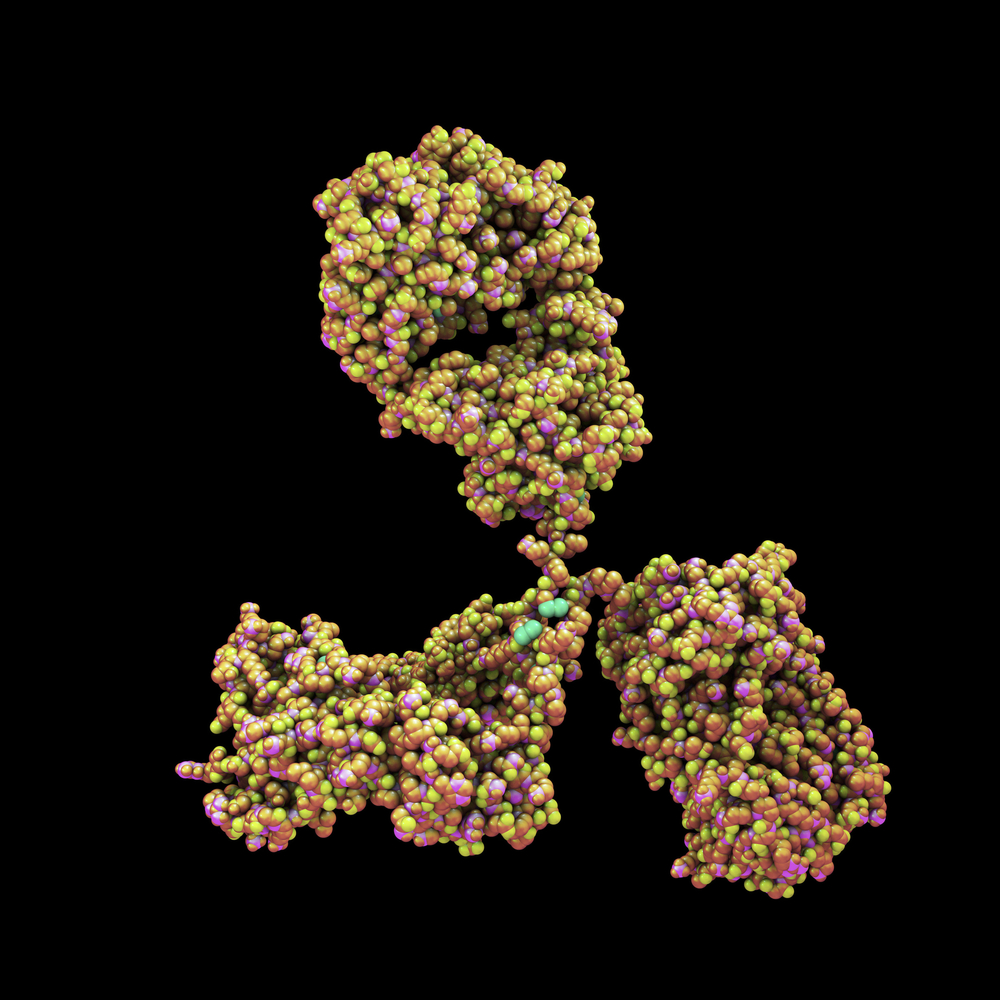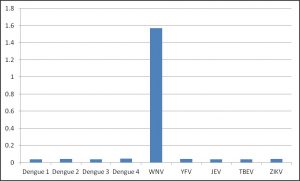ELISA assay showing specificity of MAB12160 for West Nile Virus NS1 protein. NS1 antigens from different flaviviruses were coated on an ELISA plate at 0.5ug/ml, and detected with MAB12160 at 0.01ug/ml, visualized with Goat anti-mouse IgG:HRP.
Mouse Anti-West Nile Virus NS1 Antibody (IC12)
Price range: $454.04 through $1,139.31 excl. VAT
Mouse monoclonal antibody specific for West Nile Virus NS1 (clone IC12) with no cross-reactivity to NS1 proteins from other flaviviruses.
MOUSE ANTI-WEST NILE VIRUS NS1 ANTIBODY (IC12)
Mouse anti West Nile Virus NS1 antibody is specific for the NS1 protein of West Nile virus. It demonstrates negligible cross-reactivity with NS1 proteins from other flaviviruses, including Dengue virus, Zika Virus, Yellow Fever Virus and Japanese Encephalitis virus. No cross-reactivity is seen with Chikungunya virus proteins (E1, E2 and C). This mouse anti West Nile virus NS1 antibody is suitable for use in direct ELISA and in Western Blot (in non-reducing conditions).
PRODUCT DETAILS – MOUSE ANTI-WEST NILE VIRUS NS1 ANTIBODY (IC12)
- Mouse anti-West Nile virus NS1 protein monoclonal IgG1 antibody (clone IC12).
- Greater than 95% purity by SDS-PAGE and buffered in PBS, pH7.4.
BACKGROUND
The NS1 protein is a major non-structural protein expressed by the West Nile Virus. The NS1 monomer is a glycosylated protein of approximately 45kD, which associates with lipids and forms a homodimer inside infected cells. It is necessary for viral replication, and is also secreted into the extracellular space as a hexameric lipoprotein particle, which is involved in immune evasion and pathogenesis by interacting with components from both the innate and adaptive immune systems, as well as other host factors. NS1 is one of the major antigenic markers for viral infection with West Nile. Development of an immunoassay for West Nile virus NS1 has been reported by Ding et al (2014).
West Nile Virus (WNV) is an enveloped, single-stranded RNA virus that belongs to the genus Flavivirus. It is a member of the Japanese encephalitis sero-complex of the family Flaviviridae, which also includes Japanese encephalitis virus, St. Louis encephalitis and Murray Valley encephalitis virus. In nature, West Nile virus is maintained in a cycle between birds and mosquitoes. However, WNV can also be transmitted to incidental hosts such as humans, horses and other mammals by mosquito vectors.
Since the first human WNV infection was identified in 1937 the virus has continued to spread. West Nile virus is now found in many regions of the world including Africa, Europe, West Asia, North and South America. WNV infection is asymptomatic in 80% of cases but some individuals develop severe West Nile fever. The symptoms of West Nile fever include fever, headache, nausea and vomiting. The virus has also been associated with neurological complications and fatalities in less than 1% of infected individuals.


